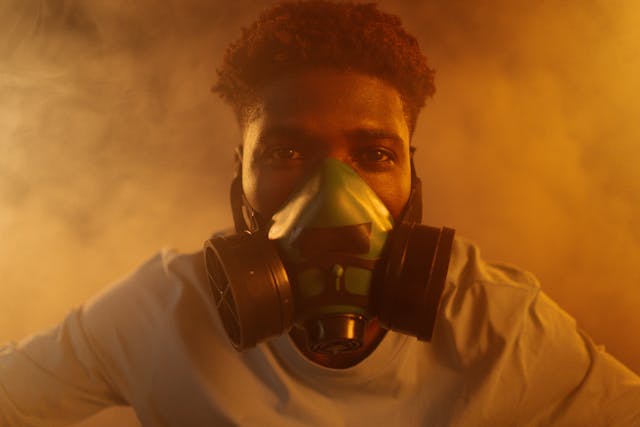
Exercising outdoors when air quality is poor can negatively impact the body, in part because the body’s natural air filtration system process is less effective when a person breathes through the mouth, which means that more pollutants reach the lungs. This holds true regardless of the cause of the reduced air quality, whether it’s wildfires, pollen or even periods of heavy traffic.
The Impact of Air Pollution on the Body
Large pollutant particles in the air can cause irritation and discomfort, while small, fine pollutants from sources such as auto exhaust or power plants can penetrate deeply into lung tissue and enter the bloodstream. Exposure to fine particle air pollution, a growing concern due to the increase in large wildfires across the Western United States, has also been associated with cardiopulmonary dysfunctions.
The physiological responses and health risks associated with air pollution include increases in resting and exercise heart rate and blood pressure, ischemia, and asthma, as well as decreases in lung function and oxygen-carrying capacity. Older adults and individuals with preexisting cardiovascular and respiratory conditions are particularly susceptible to the damaging effects of air pollution.
Strategies for Exercising Safely Outdoors
- Pay attention to the air quality index: Visit www.airnow.gov| New Window to find the air quality in your area, which can range from good (little or no risk) to hazardous (serious health effects), and adjust your outdoor exercise plans accordingly. There is a dose-response relationship when it comes to air pollution and allergens, so it’s important to stay informed if you are at all concerned about the air quality in your area, particularly if you have a preexisting health condition.
- Be mindful of when and where you exercise: If you are trying to avoid traffic-related pollutants, consider exercising before the morning rush hour or in the evenings. If you are more concerned with pollen counts, peak times may vary depending on the specific allergen. This resource from the National Allergy Bureau| New Window is helpful. When it comes to wildfires, try to leave the impacted area or find a location that is upwind before exercising outside.
- Wear a face mask: Wearing a mask is an effective way to avoid inhaling pollutants and allergens| New Window. Research indicates that face masks can be worn during exercise| New Window with no impact on performance and minimal impact on physiological variables such as blood, tissue or muscle oxygenation levels. That said, if you experience headache, lightheadedness or an increased heart rate or breathing rate when wearing a mask, it’s best to avoid using one during exercise.
- Understand the risk-reward balance between physical activity and air pollution: This may be the most important strategy: deciding when it’s even worth exercising outdoors on a given day. It may be best to avoid prolonged outdoor exercise (such as marathon training or sports practice), particularly if the air quality index indicates a high level of concern or if you are in a high-risk group. And, it’s important to note that more intense outdoor exercise, which increases respiration rates and may cause mouth breathing, should be avoided when air quality is poor.
Final Thoughts
The first step to exercising safely when air quality is poor is to stay informed so that you can make an educated decision about whether outdoor exercise is a wise choice that day, or if moving your workout to the treadmill or indoor cycle might be a better option. If you ultimately decide to head outside, select a time and location that minimizes your risk and, wear a mask, if you deem necessary. Finally, be mindful of the fact that you may need to adjust your workout intensity and duration to stay on the right side of that risk-reward equation.
